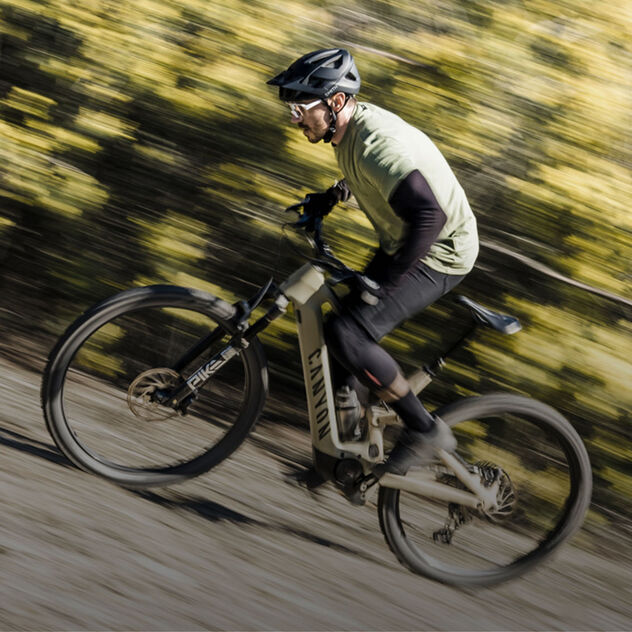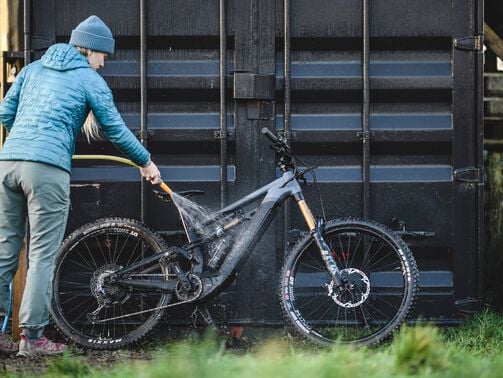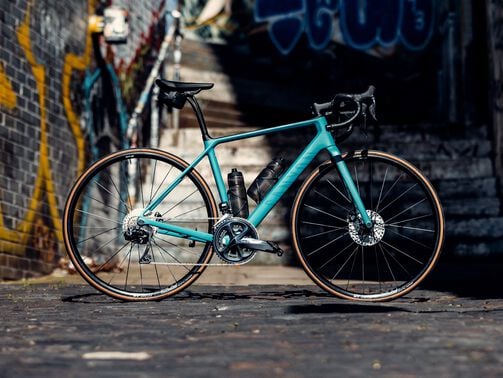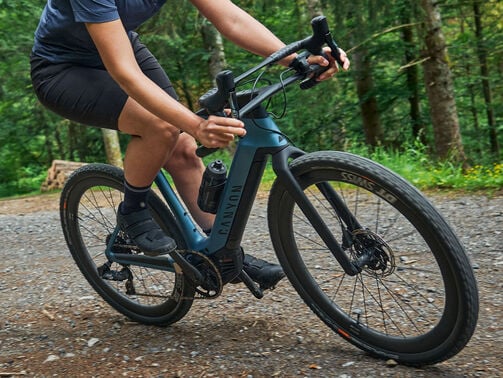Get ready for a safe cycling season with your e-bike
Your safety is important on every ride. Which is why we will guide you through some need-to-know care and maintenance tips for your e-bike.

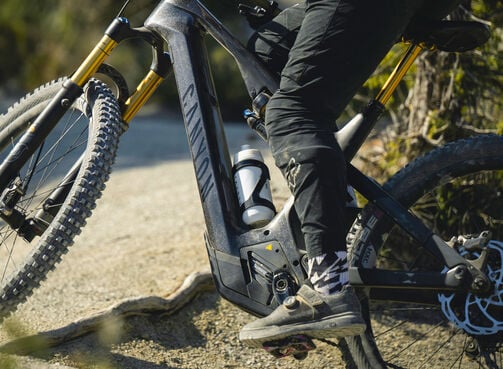
Before you start
First things first, start by giving your e-bike a good clean. For optimal results, we recommend utilising a bike repair stand and taking off the wheels. By doing so, you'll gain access to the nooks and crannies on the inner parts of the chainstays and fork. Use a dedicated bike cleaner or mild washing liquid together with a soft sponge to remove dirt. Fill a bucket with fresh water spray with a hosepipe from a distance to get all the soap off. When using a high-pressure cleaner, be cautious and pick the least powerful setting, while also maintaining a reasonable distance to stop grit or dirt getting into bearings. It's crucial to keep the pressure washer away from electronic components like the motor, battery, displays, and remotes.
Inspect all nuts and bolts meticulously, tightening them to the specified torque using a torque wrench. Recommended bolt torques can typically be found in your bike’s manual – sometimes they’re even printed on your bike or component. Failing to use a torque wrench can lead to over-tightening bolts, resulting in possible damage – such as damaging screw threads. For critical bolts, consider applying a bit of Loctite to the thread. Next, it's essential to assess your bearings, ensuring they operate smoothly with no play. Similarly, check your rear shock bushings for smooth operation. Always adhere to recommended bolt lengths, avoiding the use of bolts that are excessively long, especially in areas surrounding the downtube and battery.
Conducting a thorough brake check is essential for your safety. Assess the thickness of both your brake pads and rotors, comparing them against the manufacturer's specifications. Should your brake pads require replacement, you can undertake this task yourself – major manufacturers typically provide straightforward instructions, and specialist tools are not necessary. Brake rotors typically outlast pads and are also straightforward to replace. However, some bikes equipped with Shimano or SRAM brakes may necessitate a special Center Lock tool for rotor removal. Although this tool requires a small investment, it tends to quickly pay for itself. If the bite point of your brake feels off, it may be time for a bleed. This procedure is relatively simple for casual home mechanics, with most major manufacturers offering informative video tutorials for step-by-step guidance. If you're uncertain, take your bike to your local bike shop.
Your bike's tires require proper care too. If you're using a tubeless setup, it's ideal to replenish the sealant at the start of the season. Check your tires for signs of wear or damage, both on the tread and sidewalls. Even if your current tires are still serviceable, it's worth contemplating a new set of rubber, as this can noticeably enhance your bike's performance.
Before your ride, take a moment to inspect your gear. Ensure that the buckles on your shoes are in good condition and that your cleats are securely screwed in. Examine your helmet for any signs of damage, as even a minor crack may necessitate replacement.
Also, don't forget to inspect your tools. Ensure that your shock pump and hand pump are both in proper working order. If you carry a first-aid kit, replace any items you used last season but haven't replaced yet.
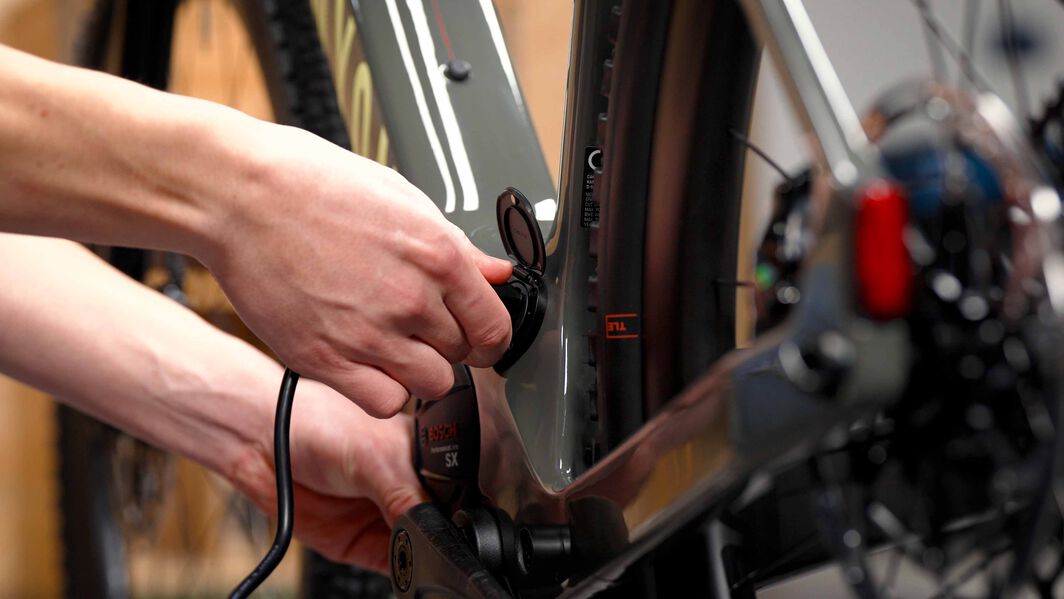
Battery care & maintenance
Rechargeable batteries, specifically lithium-ion batteries, are designed and produced utilising cutting-edge technology. When fully charged, these batteries possess a high energy capacity. However, it's crucial to be aware that the contents of lithium-ion battery cells can be flammable under specific conditions. That means it’s imperative to adhere to safety guidelines when handling and using them.
Since the battery is delivered partially charged, we recommend fully charging it when you first get it. This ensures the battery reaches its maximum performance right from the beginning, eliminating the need for multiple full charges.
The longevity of lithium-ion batteries is influenced by various factors, including charging cycles and storage conditions. Even when unused in storage, e-bike batteries gradually lose capacity.
-
Always and only use the original charger provided by the manufacturer.
-
Charge the battery in a dry area equipped with a functioning smoke detector.
-
Ideally, charge the battery at room temperature.
-
Upon completion of charging, disconnect both the battery and charger from the power source.
-
Avoid regularly discharging the battery to zero.
It's important to note that the battery can be charged at any level of charge, and interrupting the charging process will not harm the battery.
-
Ensure you only use components from the original manufacturer.
-
Adhere closely to the mounting and dismounting instructions provided.
-
Verify that all connections are dry and securely fastened.
Park your e-bike in a shaded area or within a cool room. High temperatures can potentially damage e-bike batteries, so it's important to get it away from excessive heat and direct sunlight.
For winter usage, especially in temperatures below 32°F (0°C), it's advisable to charge and store the battery at room temperature. Insert the battery into the e-bike immediately before riding.
Our recommendations:
-
Absolutely keep the battery clear of excessive heat and direct sunlight.
-
Storing e-bike batteries and chargers near heat sources or readily combustible materials should be avoided.
-
Our suggestion is to store the battery away from the e-bike and keep it in well-ventilated areas equipped with smoke alarms.
-
Dry environments with an ambient temperature around 20°C are appropriate. E-bike batteries ought to be stored within the range of 10°C to 40°C.
For more extensive storage periods:
-
Maintain the battery at a charge level between 30-60% during storage.
-
Store the battery at room temperature, within a dry environment.
-
Avoid storing the battery near objects that are flammable or combustible.
-
Ensure the battery is stored in a room equipped with a functional smoke alarm.
Clean the battery with a damp cloth. Occasionally clean the plug poles. Avoid cleaning the batteries with a steam jet or high-pressure cleaner to safeguard the electronic components.
Under no circumstances should e-bike batteries be opened. This is also the case for repairs conducted by third parties.
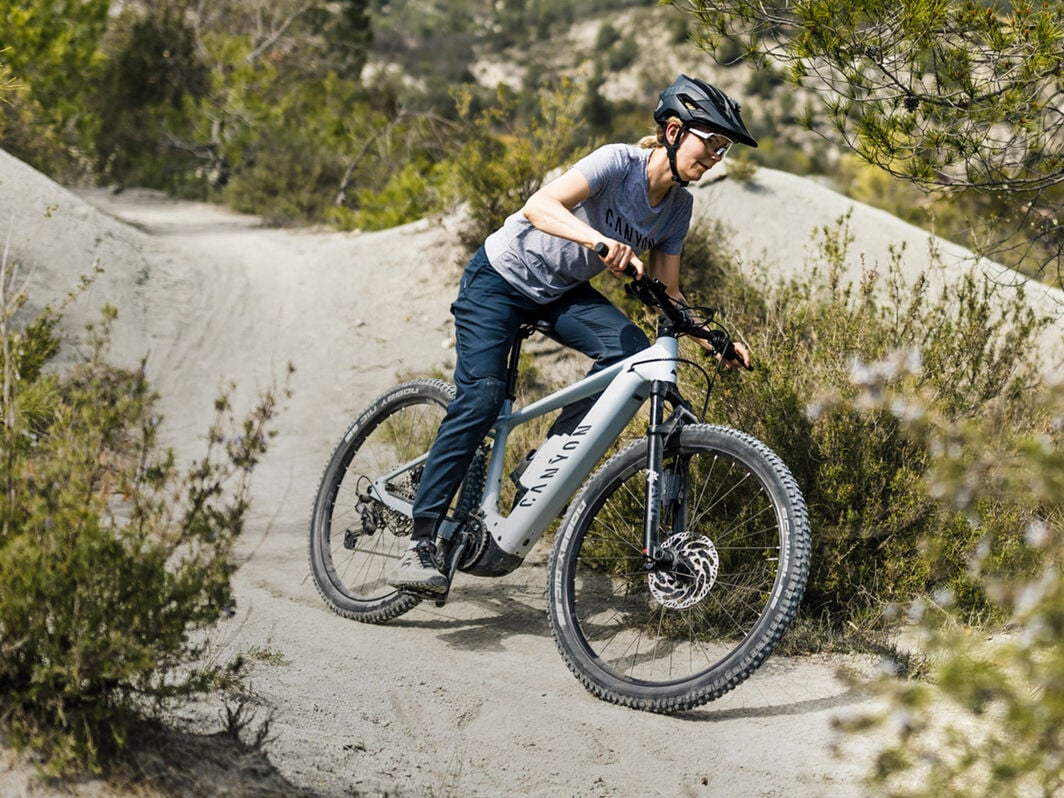
Special information for E-MTBs
If you've been using your e-MTB for an extended period, it makes sense to verify the software version loaded on your motor. Many leading motor manufacturers have issued at least one update in the past year, with some updates introducing entirely new modes and features. It's particularly beneficial to perform the update if you own a Bosch CX motor, as it enables you to access the advantages of the new e-MTB mode. Most systems can be updated easily via manufacturer app.
Everyone loves smooth, crisp gear changes. Most e-MTBs come equipped with a mechanical, cable-operated rear derailleur. Investing in a new shift cable and housing, which only costs a few euros, can notably enhance the overall shifting performance of your bike. Keep in mind that it may take some time for a new cable to properly bed in, and you may need to readjust the cable tension a few times during the initial rides. If you're unsure how to adjust the gears correctly, consider taking your bike to a nearby Canyon ASP or asking a friend for assistance.
On e-MTBs, the chain is subjected to significantly more mechanical stress compared to on an unmotorised bike. The combined force of your own power and the motor’s torque places the chain under immense tension. It's advisable to use a chain gauge to assess the condition of your current chain. If it's stretched, we recommend replacing it immediately to prevent premature wear of the chainring and cassette. Additionally, keep in mind that these parts should be replaced at least once every third chain replacement. Whether your bike's chain is old or new, proper lubrication is crucial. After lubricating, be sure to remove any excess to stop it attracting excessive dirt.
MTB forks and shocks require regular servicing. Before beginning any maintenance, ensure you take note of all your personal settings. This will facilitate a quick and straightforward setup after the maintenance is completed. Service intervals may vary significantly, but it's generally recommended to service your spring elements at least once every season to maintain optimum function and durability. While minor servicing can be done independently, we recommend sending your fork or shock to a certified dealer or manufacturer for more complex tasks.
Support
If you don’t feel like doing maintenance yourself, you can always ask your trusted ASP (Canyon Approved Service Partner) to do it for you or look for a local bike repair initiative to learn the skills yourself with the help of an expert. If you decide to get your bike serviced at your ASP we recommend doing this during the winter months when workshops are generally much quieter. By the way, some shops also offer their customers evening courses where you learn the basics of mechanics from a pro.
Did this article help?
Thank you for your feedback

